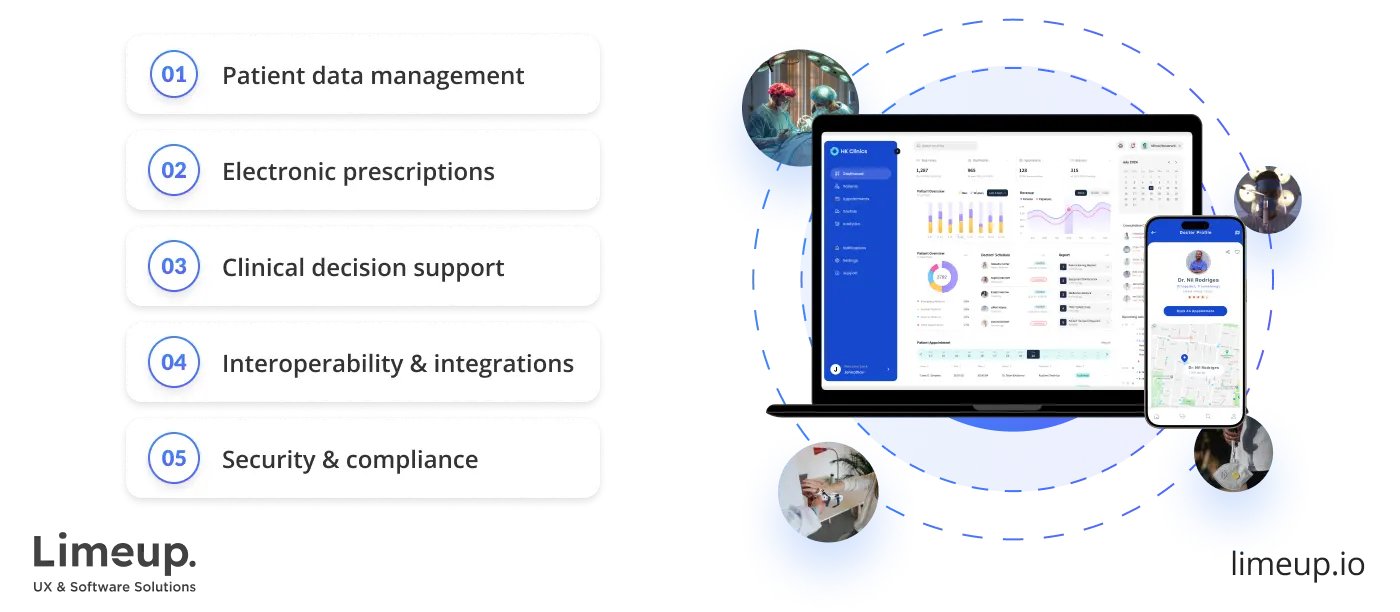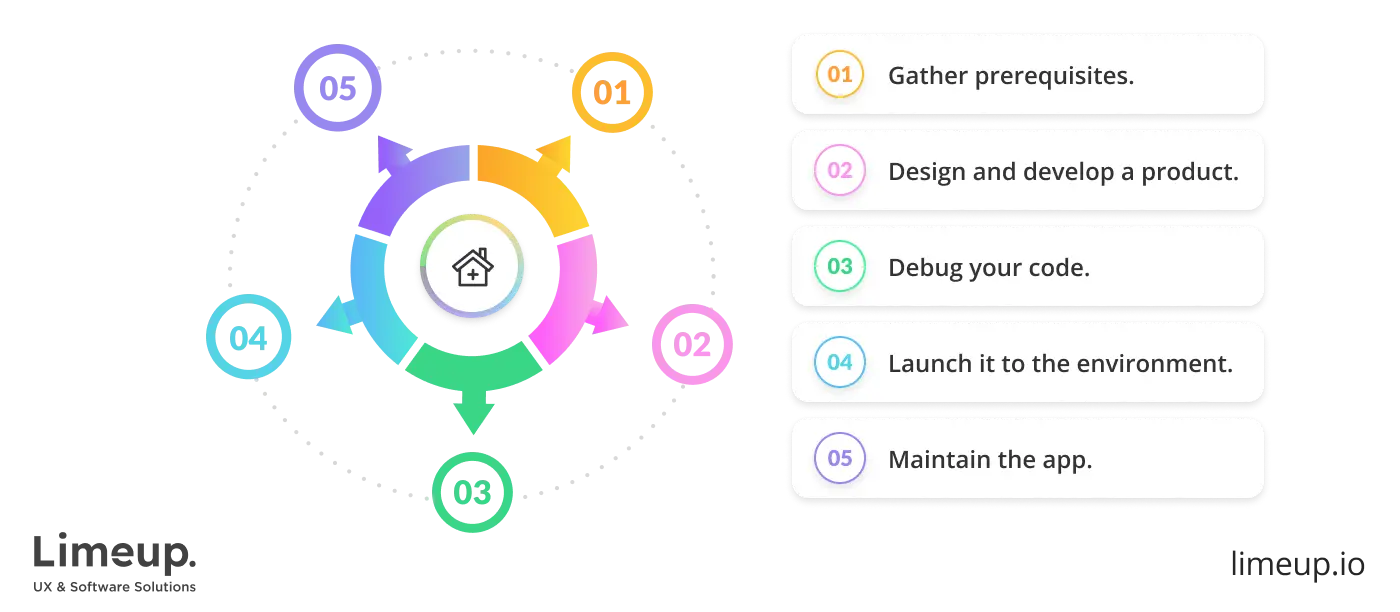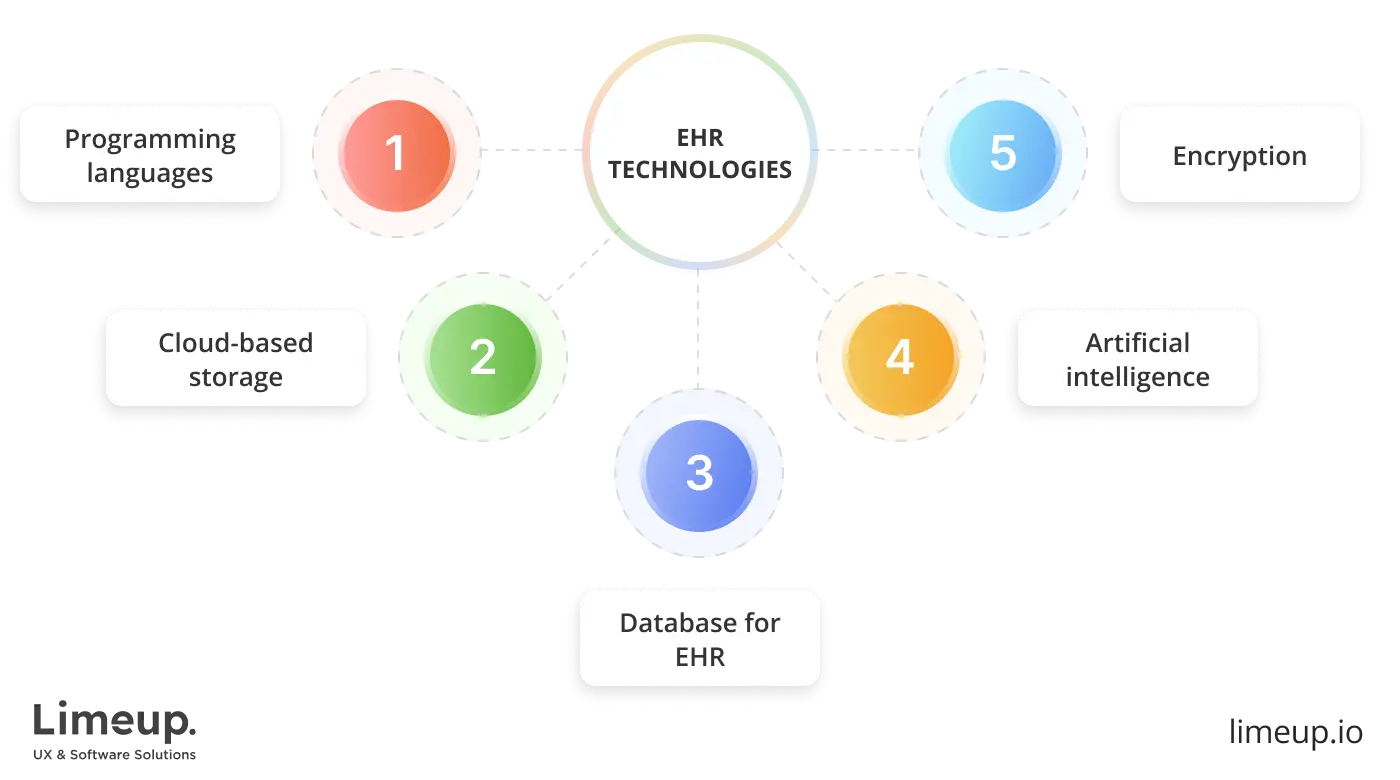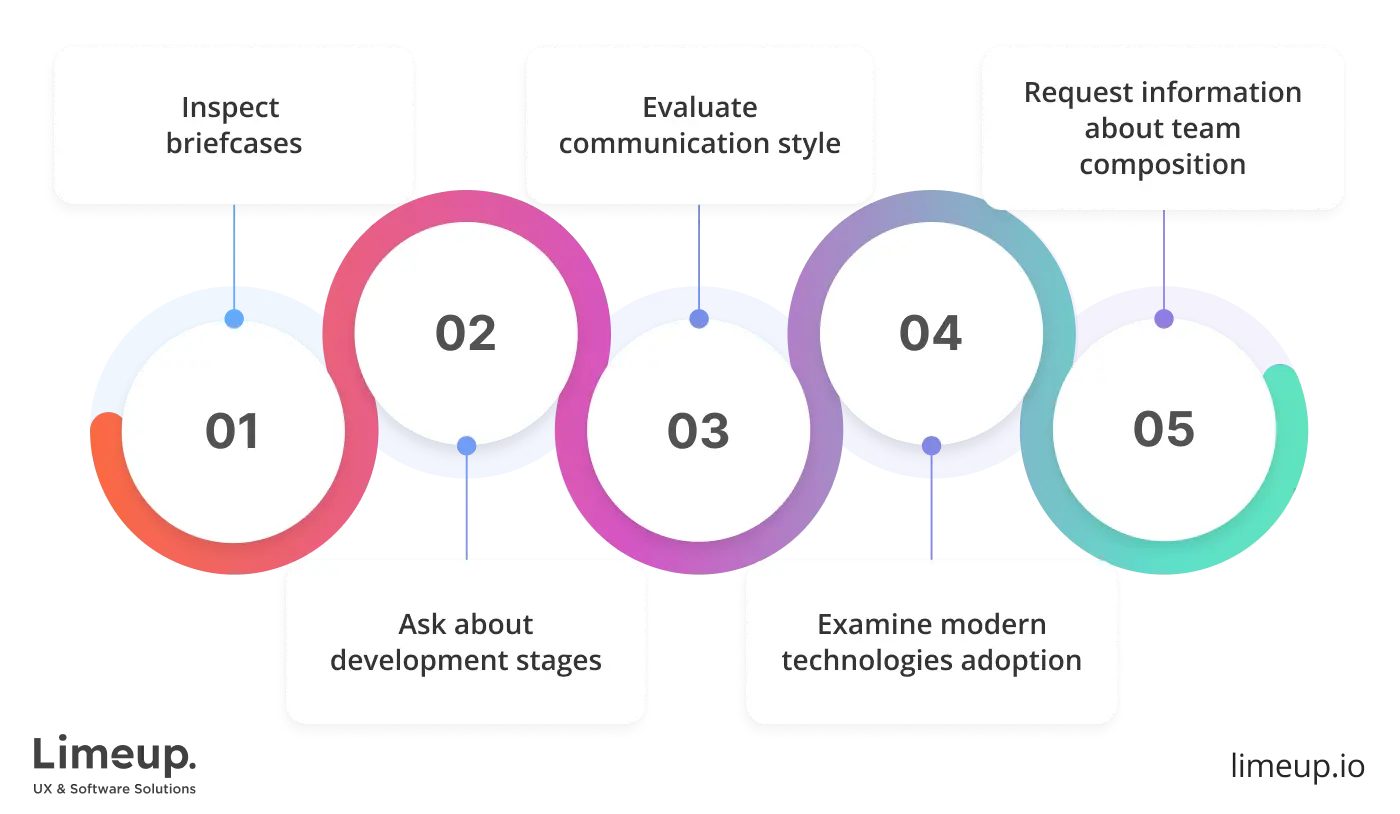How to Build an EHR System: a Comprehensive Overview

Running a healthcare industry-related organization leads you to EHR software development, which is a VIP-pass way to receive a 40% increase in patient satisfaction. Still, you may have some doubts about implementation, core features needed, tech stack, pricing, and more, so we have conducted this overview to cover every significant aspect of this solution creation.
Building an EHR system is aimed at engaging end-users, increasing operational efficiency, cost savings, and generating ROI. After reading our material, you will be able to craft such a system and receive all the benefits of Electronic Health Record as we bring to the play our decade of experience in developing EMR and EHR software solutions.
Whenever you’re set to embark on the journey of “How to create an EHR/EMR software,” investigate this article and learn about significant nuances, essentials, provider choices, and more. Let’s dissect all of them!
What is an EHR system?
EHR systems are developed and designed to securely stockpile patients’ personal history, meds taken, diagnosis records, etc., like a repository, being a so-called “window” for clinics and their doctors, which would like to gather and receive data efficiently.
EHR development is a complex process with many variables, such as extensive details that can be accessed by accredited providers due to sensitive information stored, as well as protected sharing between departments and companies.

In the fast-paced digitalization, keeping all the files written by hand or printed out is about setting more challenges as to receive full medical history, prescriptions, lab results and else doctors have to spend time searching within tons of papers. Moreover, if you have to provide these docs to another person, the worker has to mail them directly, which creates more problems.
An EHR is an ace up your sleeve, allowing users to optimize the workflow and benefit from manual tasks that usually take hours. Likewise, for now, they are able to receive a comprehensive picture of conditions and be more productive.
There are also various options for hosting, which can be selected while defining your requirements (and it’s a little spoiler to what we will consider further), so let’s dive deeper into the actual building process as you are here for this topic.
How to create an EHR software in 5 steps?
When it comes to crafting such a solution, building the plane while flying is not an option as such a significant investment will go out the window, so here we will discover top-tier stages with core mistakes to be avoided as a bonus.
Leveraging our 10+ years of background in the healthcare industry, we have outlined am established plan, additionally examining the experience of our developers, project managers, researchers, and analytics. Without further ado, let’s start with the first stage.

— Step 1. Gather prerequisites.
Elucidating your needs can feel like a cold breath on a warm neck, but in reality, it’s not rocket science since you have to examine your purpose of such a system for business, key features, which we will consider in the next point, data migration, some measures about security, and more.
This point of custom EHR software development includes observations from your end-users, such as easy usage, intuitive interface, and some visualizations for core metrics since you need to remember that your customers or, better to say sick individuals, are the first ones to interact with an app.
During this phase, it’s also beneficial to define regulations suitable and urgent for your solution, whether it will be HIPAA, GDPR, ISO 13485, or else that bound the expertise required from engineers, code testing, security practices.
Correspondingly, we recommend going through your competitors and determining what they offer, their strong sides and downs, and what recepients tell in testimonials about using their products.
— Step 2. Design and develop a product.
Compliance, usability, integrations with third-party systems, wow, sounds like too much in terms of how to create an EHR but not for veteran and seasoned coders and designers who will cover all your needs, from faster appointment scheduling to automated manual tasks like billing to visuals that differentiate your brand and build trust.
As this period goes on, defined functionality is built, as well as user-friendly screens for both admins and patients so that customer satisfaction rockets to the sky. Back-end and front-end come together, combining databases, APIs, web and mobile interfaces plus integrations with labs, medical devices.
Note: transferring data is part of this stage, so our advice is to
- identify your sources and information types,
- ensure there are no duplicates and you have a backup,
- covert, verity and import.
— Step 3. Debug your code.
Your bread and butter — coding process — has to be investigated with a QA team that can ensure adherence and proper operations without issues, conducting tests related to performance, protection, usability, and so on, with the implementation of manual and automated ones.
As an EMR system development can’t be built in one day, just like Rome, it’s crucial to monitor any bugs to make the cream-of-the-crop version perform according to the plan.
— Step 4. Launch it to the environment.
Going live is a thrilling moment, yet, if you have followed all previous moments, ensured to have a backup, and have a robust team that will take care of real-time monitoring, it will be like a walk in the park. You will receive a smooth adoption with no downtimes and maximum efficiency.
— Step 5. Maintain the app.
You are able to exhale a little since the next stage is about keeping things going well, in other words, remains useful for real-world end-users and still here’s a standpoint that scalability, UI/UX enhancements, resolving system errors, preventing slowdowns are also included, so we don’t recommend skipping this part.
We have outlined the most vital elements in the complex creation, however, based on the experiences of healthcare software development companies, the best decision is to delegate such tasks to skilled coders who have reliable knowledge, allowing them to take on every tech assignment.
What are the features of EHR software development?
As stated by the latest report, 96% of care hospitals adopted an EHR as it simplifies many processes. Managing unstructured data is a challenging and daunting work part, as well as online access to essential information, so EMR development which goes hand by hand with core topics is also a part of the comprehensive product with vital functionality.

We would like to overview 5 of them which, in our practice, are the most required by clinics and related organizations, to say more, creating EMR/EHR without them is like buying a bike without breaks, like you still can drive it but what’s the point?
-
Patient management is a fundamental, base opportunity that simplifies your life and builds loyalty from clients as you are able to provide more personalized and efficient care, having details on hand. An EHR developer — a pioneering one — will provide all of the needed functions like registrations, check-ins, follow-ups, and more.
You are capable of integrating practice administration to cover even more points: reporting, scheduling, payments, etc, of course, for some of them it is better to cooperate with an EHR software development company.
-
Tracking (+ inventory) of orders is a section of e-Prescribing (like an electronic way to add supplies), with a straightforward system that allows doctors to spend and approve categorizations, check delivery, receive notifications, and more which is essential to pharmacies and healthcare organizations.
Therefore, you will decrease the number of wrong medication orders, making them safer and preventing duplicates, you can even hire software developers for automated alerts that indicate if any section is in short supply.
-
Analytics for better treatments is about cutting-edge technologies like AI, quite a new kid on the block that has to be built with a tech-savvy mind and ability to integrate such state-of-the-art attributes as staff will receive recommendations based on the data from patients, insights for smoother data-making process.
Therefore, if you were wondering if the question of how to develop an EHR includes artificial intelligence, our answer is yes, with reliable programmers who know the nitty-gritty and have experience.
-
Data exchange is a must-have for private firms and clinics which would like to involve not only inside management but sharing files with other departments that can be located in another city, as it was with one of our customers who had labs across the country. They needed a resolution to seamlessly collect test results within hours to post them for patients.
-
Reports setting up is also about digitalization as it enables an opportunity to remove paper work and replace it with fast systems that will not only generate reviews of diseases or treatments analytics but financial ones, researchers and studies, trends, workflow changes and tendencies.
We have compiled both basic and advanced features, proven by a short observation from our experience, and the proof is in the pudding — EHR and EMR software development has a plethora of functions that simplify clinics’ workload and allow medical practitioners to work faster, dedicating more time to patients instead of manual work.
As we have defined the preferences for such software, how about jumping right into the list of technologies to be used. You need to know what to check when contacting EHR developers, so here we go.
What technologies are used in Electronic Health Record development?
Answering this query is a bit tricky so we decided to investigate Quora and survey our tech-savvy coders who answered that Python and Java are cornerstones of an EMR developer, still, there are more of them plus frameworks, databases, analytic tools, so let’s reflect on some of them:

- Programming languages.
Some of the preferred ones we have already named, such as Java with its rich usage, from safeguard to user-friendliness and scalability for web and mobile applications. Python is a diamond for the highest level of customization in tailored EMR software development which allows it to meet unusual demands which can’t be covered by off-the-shelf products.
Looking through discussions on Reddit, our specialists noted that C# also climbs the charts in the healthcare industry owing to ease of use, general-purpose nature, and quality of libraries.
- Cloud-based storage.
According to the data on PubMed Central, cloud computing is aimed at privacy, cost, scalability, interoperability, and more aspects, that’s why we include it here. The IT supplier can choose amidst or even combine if required AWS from Amazon with cloud infrastructure, Microsoft Azure for conformity, or Cloud Healthcare API from Google.
- Database for EHR.
You (or your developer) are able to choose among relational ones, NoSQL, specialized for the healthcare niche, according to your requirements in compliance, performance, and integrations.
Based on our expertise, MySQL and Microsoft SQL Server are the most widely used for structuring information, while handling unstructured data is harder and has to be powered by NoSQL databases like Firebase or else.
- Artificial intelligence
The understanding of AI-powered solutions is essential due to the question, “How to create EMR software?” from companies who would like to remain competitive for decades and make more well-through-out decisions based on analytics which can be provided by this technology.
Personalization and real-time metrics are two beneficial pillars of modern development, so overall recommendation is to hire dedicated developers who can leverage AI and bring automation, enhanced management, and other advantages to your system.
- Encryption
Patient and worker trust is not built in a day so security will prove you are a reliable organization that can take care of access, migration, and storage. As the number of breaches increases, end-to-end encryption is the way to overcome all the challenges.
We will name three of possible algorithms: AES (Advanced Encryption Standard) verified by governments in the USA, RSA (Rivest-Shamir-Adleman) from 1997, ECC (Elliptic Curve Cryptography) which is compared with RSA.
Well, we have discussed the vital aspects of technologies used in EMR software development services as you will be able to learn more specific tech stack for mobile or web apps, for example, with the usage of Swift or React Native, as well as payment processing tools, communication, and more.
For now, let’s move on to the questions that confuses so many clinic owners and representatives, they often feel like dancing with the dark trying to sort through the influencing standpoints. We have tread this path for you, bringing into the play a comprehensive table and brief descriptions of some factors!
How much does an EHR system development cost?
Instead of talking too much we are able to provide you with a seamless table, so why skip such a convenience part, right? Here’s a breakdown that will cover all the nuances about healthcare-relayed software development cost:
| Factor | ~$ | Description |
| Basic software | $50,000–$150,00+ | Includes only the core features (some of them we have outlined above) which are suitable for small firms. |
| Custom creation | $150,000–$500,000+ | Here, you can add integrations for more efficient work, data transferring, etc. |
| UI/UX design | $10,000–$50,000 | Depends on the two points on high plus accessibility and intuitive navigation. |
| Ongoing maintenance | 15-20% of initial development price | Will be defined by your demands in bug fixing, security updates, etc. |
Electronic health record development seems a little costly but still affordable even for startups as their requirements are lower, and the need for scalability will come as the business grows. As you are aware of options and average prices, why don’t we jump right into the selection process?
How to choose an EHR and EMR software development company?
There are thousands of vendors that are available within one click on Google or other search engines, and the tricky standpoint is if all of them can deliver tailored apps, with easy scalability, regulatory deference, automation.
No, not each of the providers is capable of accredited platform creation, that’s why we will indicate notions that help you to select a proper one and start collaboration according to your expectations.

— Inspect briefcases.
EHR custom software development is not something common, unlike simple app creation, and it requires more dedication to the healthcare area. So, our recommendation is to check the real portfolio, not just the appearance but key results and features, how they impacted the operations, what was a testimonial, etc.
To keep this blog post short, we would like to add that in terms of portfolio, many companies also describe tech stack, development methodology (such as Agile), tech challenges they overcome. More notably, we have indicated regulations a few times, and here you can investigate this complicated point as telehealth solutions without governance alignment will not be efficient.
— Ask about development stages.
We have considered this perspective a little in the “How to develop an EHR” section and concluded that some IT suppliers skip market research or competitor analysis, which are vital for future-proof programs.
Talking in examples, Limeup has a well-established creation process of 5 steps that cover holistic strategy creation since assessment of your workflow defines all the way, as well as milestones. Then, UX engineering and prototyping come together for clinical insights that will make user experience flawless.
Also, architecture can’t be left unturned and security measures with strengthened encryption protocols that will safeguard all the sensitive data. At the final stage, deployment is conducted — error-free and controlled so you can use the solution immediately, train your staff, or else.
— Evaluate communication style.
An EMR software development company has to hit the nail on the head though every message and answer, to say more, it’s simply about developers’ ability to listen to your propositions, needs in acquiescence, features, customization, tailored end-users demands for the system.
How to check it at an early stage? — set some vital factors like responsiveness to your emails, clarity and transparency in costs, timeframes, the scope of team, other ongoing operations.
Referring to the first part of this list, case studies that include reviews from past consumers will also cover any misunderstandings or poor explanations of tech terms, processes.
— Examine modern technologies adoption.
Remaining future proof is a must as EHR custom software development may break the bank and has to be worth every penny spent, and one of the components is implementation of AI/ML, blockchain (which are current trends). Additionally to the experience with such innovations, we recommend paying attention to ongoing support which includes assumption to new equipment.
— Request information about team composition.
The IT crew represented for your app building has not only to give you the lowdown but also be full-fledged, combining project management, engineering, testing, ongoing maintenance, experts in security.
Therefore, they will identify possible challenges and errors, ensuring seamless integrations and scaling up every stage.
To wrap up this topic, we would like to note that the final choice depends on your needs, such as if you were wondering about how to create an electronic medical record system with minimum budget, then pre-dame solutions may become your top-tier opportunity, while customized ones are more suitable for providers with tailored needs.
Our advice is to cooperate with a vendor who not only has tech background but matches your vibe and values as you will be working with them for months, and idea validation plus staying on the same page defines the whole collaboration success.
Summing up
After finishing this article, you definitely don’t feel like holding hands with a nightmare since we have placed all the vital information that can be useful in terms of creating such complex software that is a weighty and costly investment, so there’s no place for mistakes or second chances.
Moreover, we have investigated the tech stack required for EHR software development services and which is the cornerstone for your workaround and define more than just the tech side but pricing as well, which we have broken down in this material.
If you would like to simplify the whole development operation, reach out to Limeup and we will schedule a free meeting to discuss your needs. Leveraging over 200 conducted projects, we are proficient across EHR platforms, with in-depth knowledge of industry nuances, compliances, and trends.

